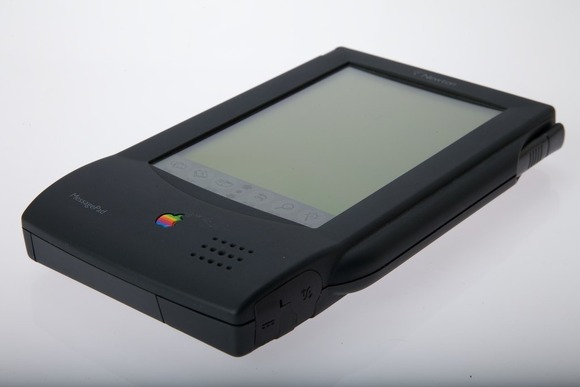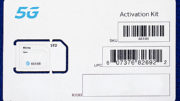What you see above was Apple’s first mobile device, the Newton. It didn’t work very well and didn’t sell very well either but it was the basis of a whole generation of “personal digital assistants” that ruled the roost until the first iPhone was released. Aside from being hard to use and having a screen that gave new meaning to the word “dim,” it was also big. Really big. It was about the size of three iPad minis stacked on top of each other, give or take.
For much of the 2000s, “smaller is better” ruled phone design. Nokia’s 3310 series was one of the popular phones of the day and it was light, tiny, ran for a week on a charge and almost indestructible. Oh, for that level of performance today… but then again something happened between then and now. People stopped thinking of the phone as something you used for calls and started using it for video, web surfing, social networking and tons of other things that weren’t even invented in 2004. The phone became something we look at, not something we talk into.
And so, based with a market full of aging boomers and millennials with a thirst for content, phones began to get bigger again. With every new generation we shrieked and wondered how they would fit in our pants pockets. Some of the larger phones (or phablets) don’t fit at all and require both men and women to carry some sort of shoulder bag. For those who still prefered a more petite phone, there was always Apple, the lone holdout among the top tier when it came to size. Apple contended its customers wanted a phone they could hold in one hand, so it stuck with phones about the same as their original 2007 model.
Unless you have been spending your days in an underground bunker you’re probably aware that Apple has brought forth larger phones, and that most people are glad they did. Speaking for myself, my aging eyes find it hard to use a smaller screen and a 4.7″ phone is probably the best solution now. I have to wonder, though, if this will herald a change in fashion… perhaps pockets will get bigger to match the bigger phones.
One way or another, we’re reaching sort of a critical stage where our devices can’t get much bigger even though we want the screens to get larger and larger. There have been several attempts to fix this in the past, but folding screens and tiny projectors have been unpopular. It’s hard to know exactly what the answer is. Devices like Google Glass have been met with severe resistance, and it’s hard to exactly see how adding a watch with a tiny screen is going to make things better either.
Back in 2004 I did predict something like a smartphone, something that would take the place of my cell phone, my PDA, my laptop, my camera and my GPS. I didn’t realize how important such a device would become… I don’t think anyone did except Steve Jobs. Looking forward to 2024, though, I can’t predict what we’ll be interacting with or how we’ll be interacting with it. We all want a 42″ screen that fits in a pocket. Holograms? Mind control? I have no idea how we’ll do it, but I know one thing… if history is any indication we will do it.





